Why
I like nudibranchs,
marine slugs with
Verve
by Hans Bertsch
author of
"Everything
you ever wanted to know about nudibranchs but were too timid
to ask"
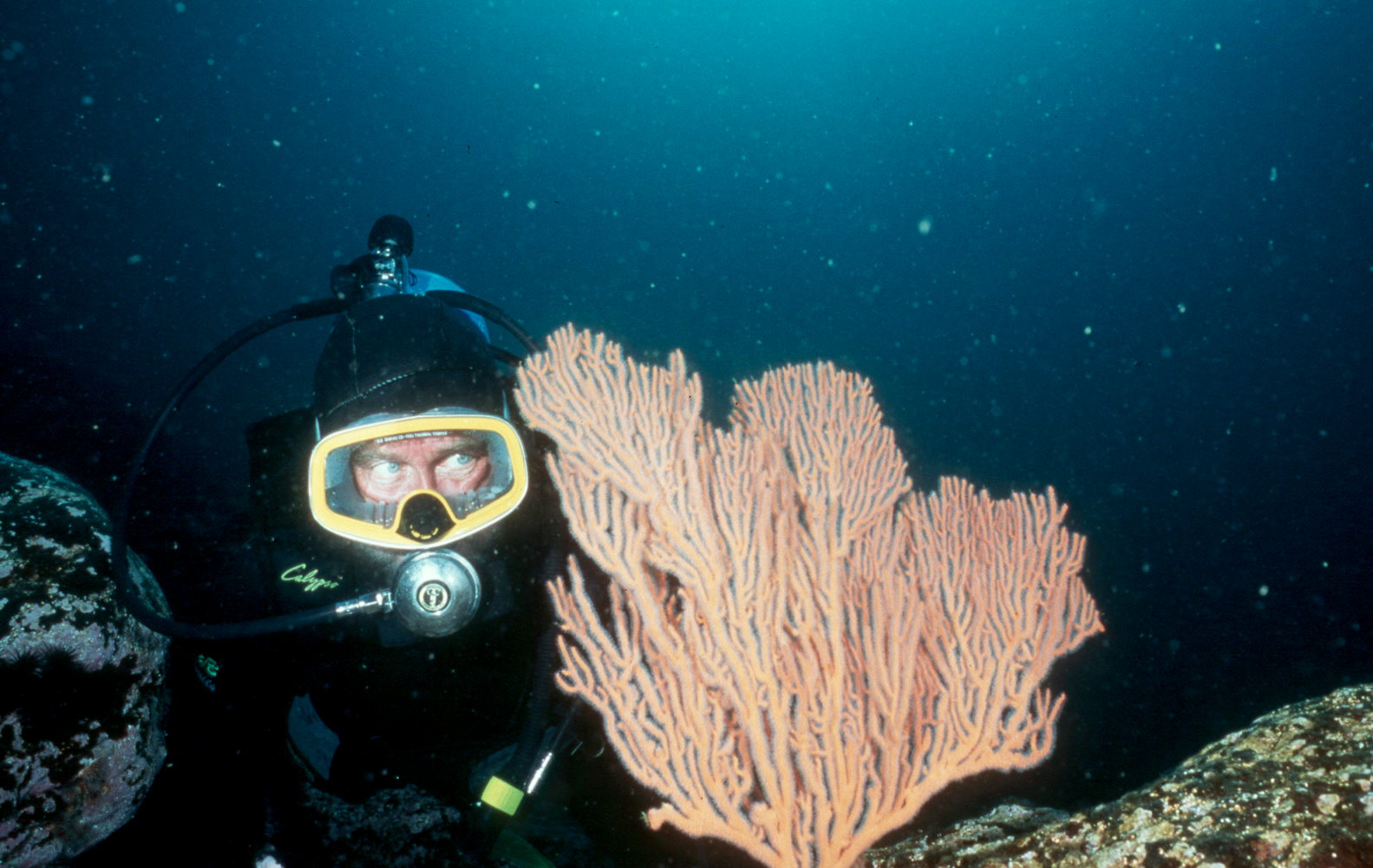 Hans at Bahía de los Angeles
(copyright
©
Jim Mastro)
Some
thirty-five
years ago I was living at the Old Mission Santa Barbara,
California, undergoing theological training to become a Catholic
Franciscan priest.
There is a museum, down and
across the canyon from the mission —
the Santa Barbara Museum of
Natural History. The director of the invertebrate zoology department was
Mr. Nelson Baker. He smoked the biggest, thickest, longest,
most humongous cigars available. And back in those days, he
didn’t have to go outside under a tarp like California’s
Governator today.
Hans at Bahía de los Angeles
(copyright
©
Jim Mastro)
Some
thirty-five
years ago I was living at the Old Mission Santa Barbara,
California, undergoing theological training to become a Catholic
Franciscan priest.
There is a museum, down and
across the canyon from the mission —
the Santa Barbara Museum of
Natural History. The director of the invertebrate zoology department was
Mr. Nelson Baker. He smoked the biggest, thickest, longest,
most humongous cigars available. And back in those days, he
didn’t have to go outside under a tarp like California’s
Governator today.
One of
the staff members was a gentleman named Gale Sphon. He sort of
took me under his wing, allowed me to do some part time work
at the museum, and in general helped a fledgling scientist.
I would meet him at 3 am, and drive
50 miles or so northward to Punta Concepcion, where he had
obtained special permission to collect. We had to pass through
several locked gates. (Not only is it private property. It is
adjacent to the Vandenburg military station, which frequently
shoots rockets off across the Pacific to near Enewetak, to make
sure their guidance systems work. Good idea.)
Here we'd be, using flashlights and
lanterns, in pitch total blackness, wearing thigh-high rubber
protective boots.
We'd squint and squeeze our eyeballs
looking for 5-15 mm long slugs, often very well camouflaged.
Then, like the beginning scene of “2001, A Space
Odyssey,” there'd be a sudden moment of enlightenment as the sun
rose and cast its light onto the tide pools. What had been
only outlined by our narrow beams of light, was now brilliantly
revealed in a full kaleidoscope of color. The algae reflected
marvelous shades of brilliance — green, a blue glow, reds . . . The tide pools exploded in a brilliant rainbow
destroying the darkness with iridescent coloration.
Then we started to find more and more
nudibranchs
(pronounced
nu-di-brank)
—
in pinks, whites, yellows, oranges, blues, and all
sort of shapes and sizes!
Gale and I would work the low tide site
another hour or two, until the low tide became slack, and then
reverse to come back in and cover our search areas. But we
were satisfied, took our bucket of unidentified species back to
the museum, and placed them safely in an aquarium. He'd go home
and I'd return to the Mission to take a nap, until we would
regroup later in the day to identify the species (unnamed, range
extensions, well-known, etc.) with the museum’s microscopes (and
Mr. Baker’s cigar).
That galvanized my interest in
nudibranchs — to go from pitch blackness in the field to the
elegant beauty of sunshine in the morning!
From there it did not take me long to
really get hooked on nudibranchs. I took a summer invertebrate
zoology course, had to do a research project — and guess what I
chose? The interactions between a nudibranch and its
cnidarian prey!
The rest, as they say, is history.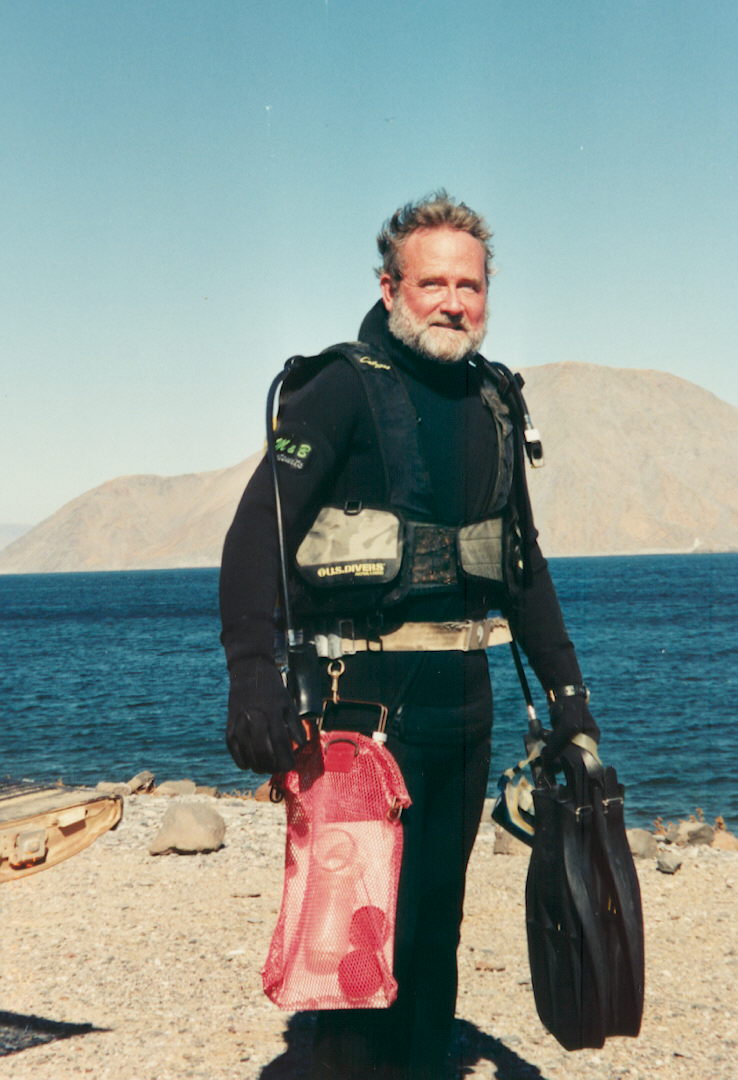
The joys of discovery,
and naming
I
published my first scientific article (in The
Veliger) in
1969, and named my first species of nudibranch in 1970.
.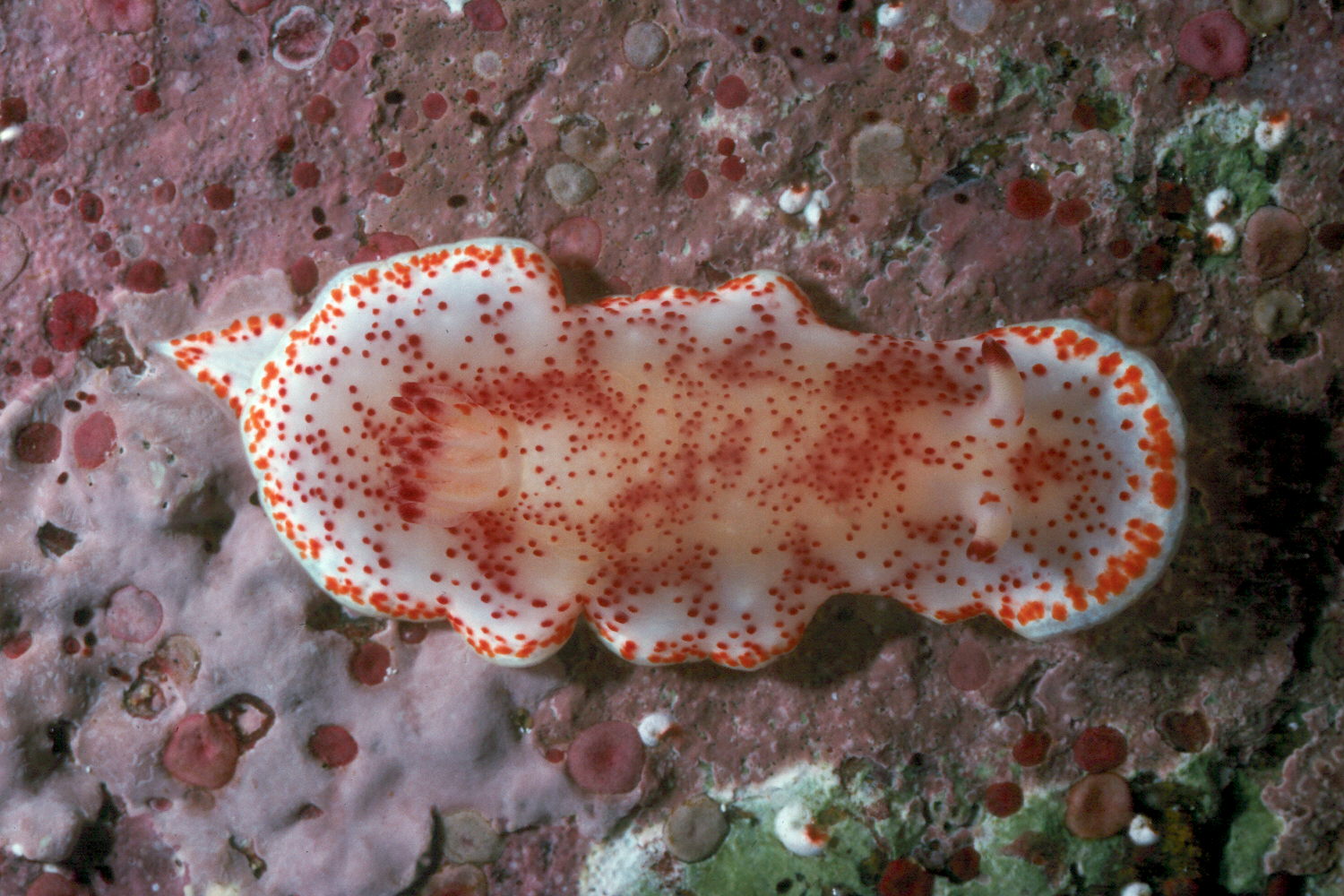 Glossodoris baumanni
(copyright
©
Hans Bertsch)
Glossodoris baumanni
(copyright
©
Hans Bertsch)
This was a real milestone, because it
was the first species of nudibranch ever named that used
scanning electron microscopy to illustrate the radular teeth!

-
Radular teeth
-
Glossodoris baumanni
(copyright
©
Hans Bertsch)
The species was collected while I was
working at a marine station near La Paz, Baja California Sur,
under the directorship of Dr. Rita Schaefer of the Los Angeles
Immaculate Heart College. Just an aside, we stayed at the
resort home of
Bing Crosby!
(Ed: HB
disingenuously puts an exclamation mark after this comment, but
the connection between
scientists
[especially the slug-smitten
subspecies nudibranchologist]
and Bing deserves exploration.)
This species was named in honor of
Father Anthony Baumann, my high school biology teacher who was
so important in my formation as a biologist.
This recent article by Terrence Gosliner and myself,
describes three species of Okenia nudibranchs
from the eastern Pacific
and the coasts of Baja California that we discovered and named.
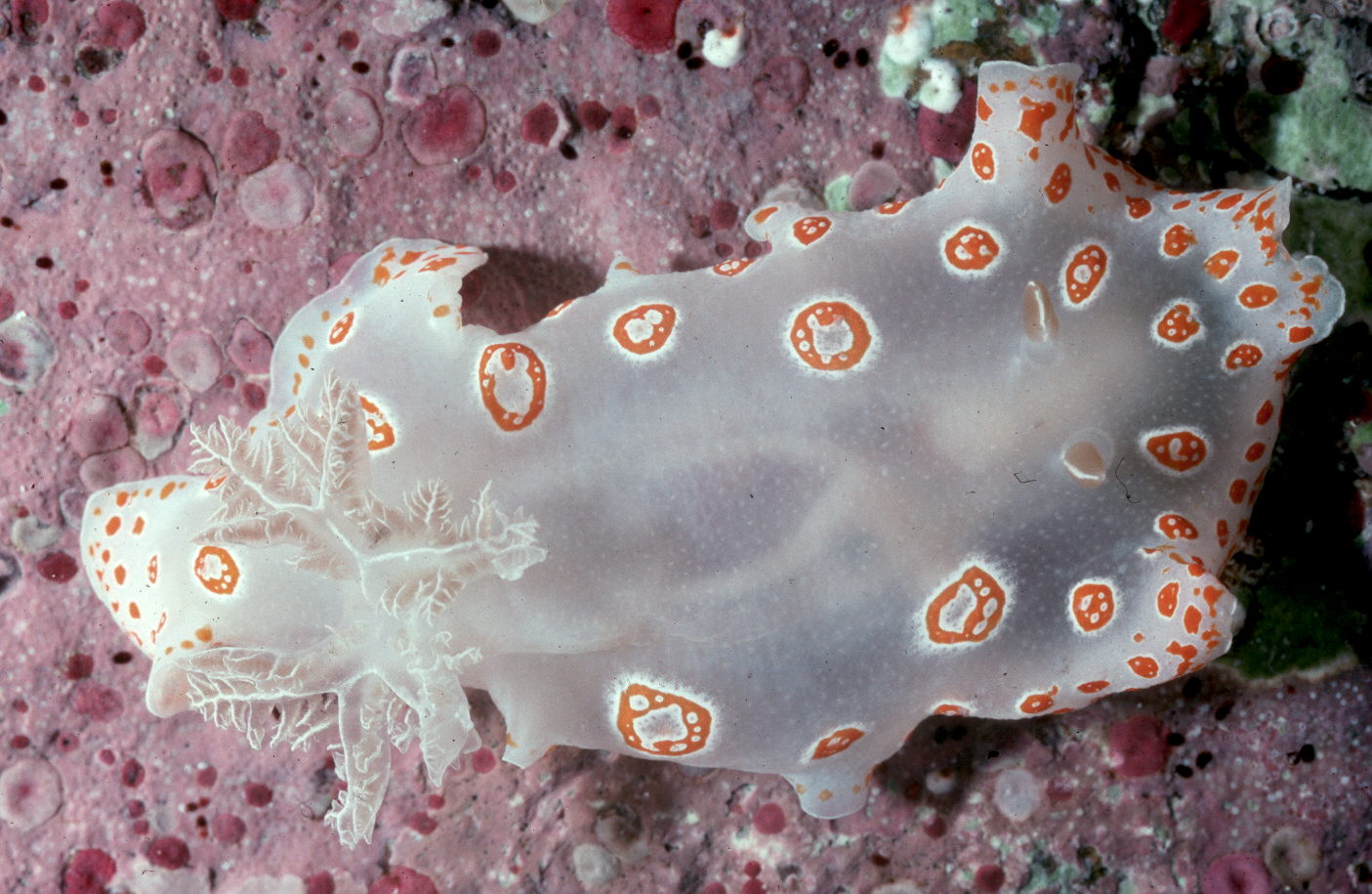 Chromodoris marislae
(copyright
©
Hans Bertsch)
Chromodoris marislae
(copyright
©
Hans Bertsch)
The Chromodoris
marislae is more common in the
southern Gulf of California, although this photograph was taken
at Bahía de los Ángeles.
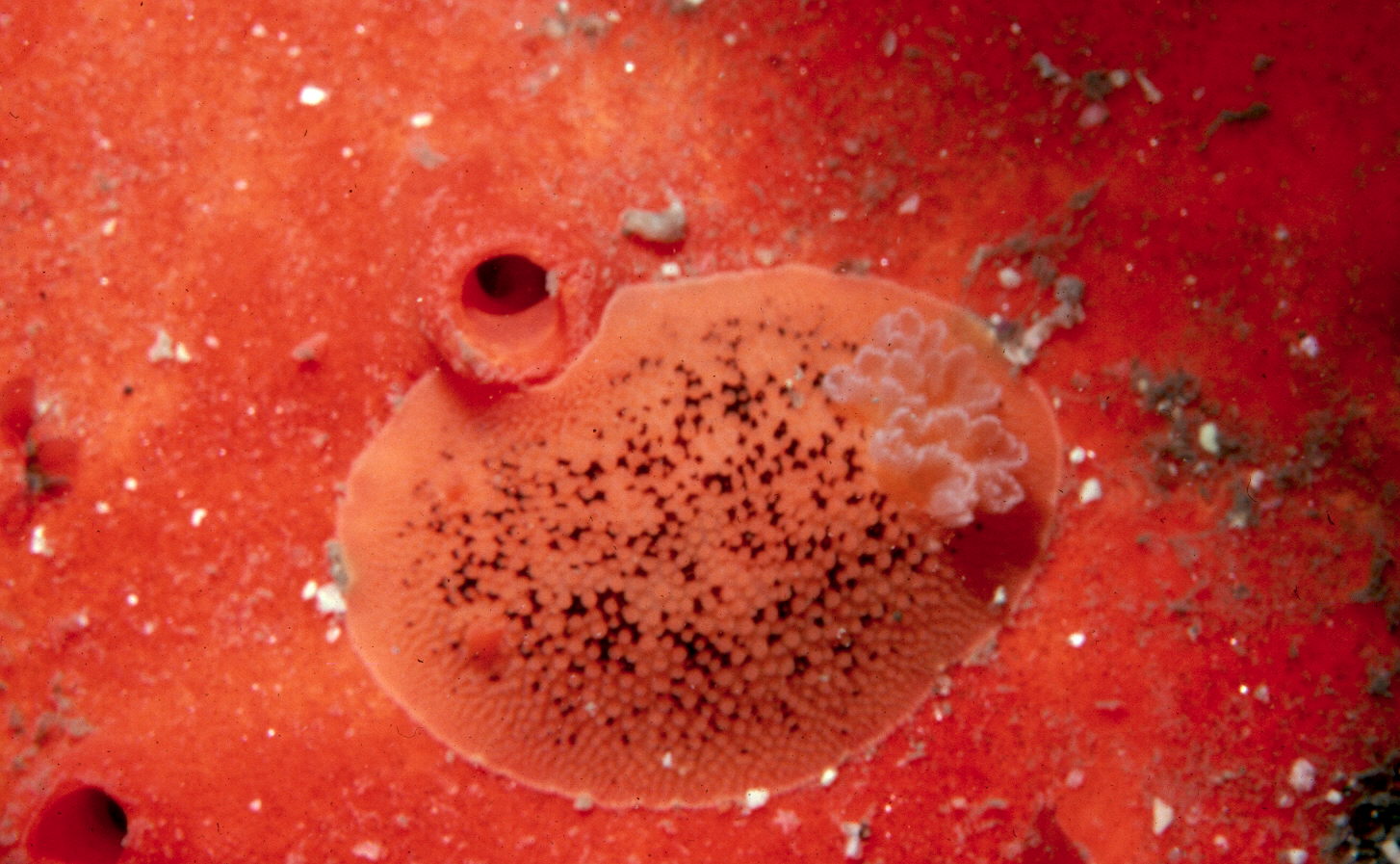 Peltodoris nobilis
(copyright
©
Hans Bertsch)
Peltodoris nobilis
(copyright
©
Hans Bertsch)
This specimen of
Peltodoris nobilis
is intriguing, because the animal is usually yellow with black
maculations, but it has been feeding on an orange sponge which
affected its coloration.
Fascinating party
animals
Biologically, nudibranchs and their related opisthobranchs are
incredibly interesting animals — showing camouflage, chemical
defenses, and all sorts of other defensive mechanisms.
Besides, they are beautiful, all dressed up ready to party!
Enjoy the animals, and their names!
Go take pictures of them!!!!!!!
Ed. note: Dr. Bertsch never mentions their rather amazing sex life here, but he does
in his renowned exposé,
Everything you ever wanted to
know about nudibranchs
but were too timid to ask

Dr.
Hans Bertsch was born in St. Louis, Missouri, and received
his Ph.D. from the University of California, Berkeley. His many
publications include technical works on archaeology, the
philosophy of science, marine biology, and popular scientific
articles on various natural history topics. He has published in
Mexican, Japanese, Israeli, German, Norwegian as well as U.S.
journals.
He has named over 30 species of nudibranchs, and has had
several named in his honor. His favorite is Bajaeolis
bertschi, foudroyantly colored in various shades of pink and
red, with white maculations.
When not underwater, preparing lectures, or writing, he
enjoys meandering the dirt roads of the Baja California
peninsula, plant, animal, and rock art hunting.
AT:
on Hans Bertsch Although he has written many technical
works of great erudition, his ability to communicate his love of
the creatures he studies, and his respect for their world, are
extraordinary. I was besotted with sea slugs before I read
"Everything . . ." but with a bit of knowledge and a lot of his
enthusiasm, my awe has grown, with lots more curiosity.
He has infected me with the wish to know more, which is what
science and communication should be all about. I hope he continues
to explore, and to write more for those of us who have
never seen a courting nudibranch, let alone seen a writer, let
alone a scientist, so casually use the word "foudroyantly."
Dr. Hans Bertsch may be
contacted at:
hansmarvida (at) sbcglobal.net
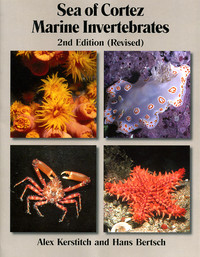




 Chromodoris marislae
Chromodoris marislae

